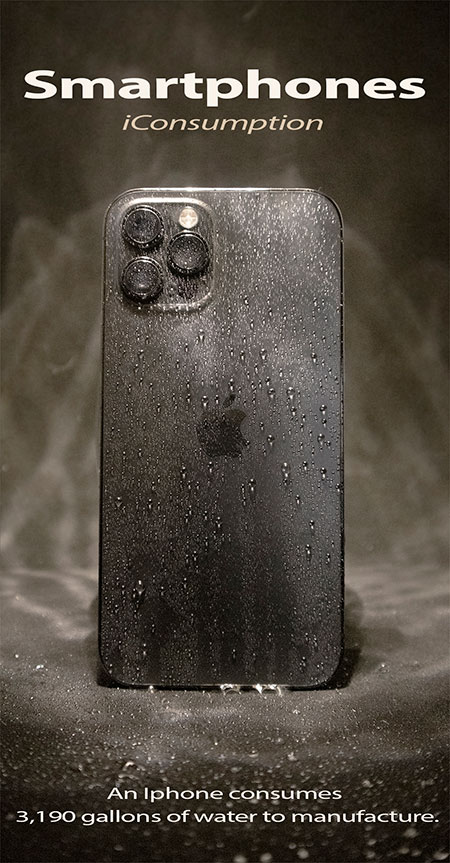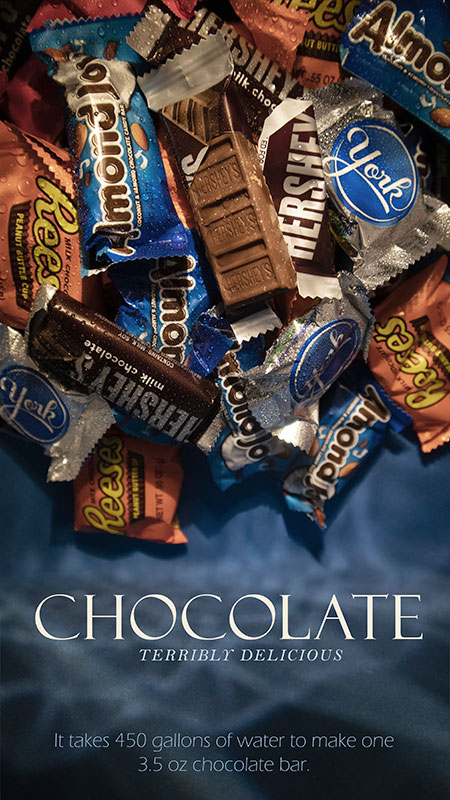In response to Arizona’s unprecedented water challenges, the Narrative Storytelling Initiative at Arizona State University is engaging students in conversations about urgent water issues through a series of interlinked courses.
The Narrative Storytelling Initiative received support provided by ASU’s Impact Water – Arizona program, courtesy of Virginia G. Piper Charitable Trust and part of the Arizona Water Innovation Initiative, to help develop the Water Narratives and Societal Change course.
The water issues examined by students from a variety of disciplines range from the lack of water in Arizona and the Southwest to the abundance of water and imminent flooding in other parts of the world because of rising temperatures, rising sea levels and intensifying extreme weather events.
“Not only are water issues — too much and too little water — increasingly critical to Arizona, the Southwest and the globe, there’s no simple answer or singular way these issues can be presented and amplified to motivate the public,” said Steven Beschloss, creator and instructor of Water Narratives and Societal Change.
“This course and its engagement with other courses consciously attempt to develop knowledge and skill in multiple storytelling modes to reflect and explore the various ways people consume information, learn and may be influenced.”
Master of Sustainability Solutions student James Cobb emphasized the way Water Narratives and Societal Change opened his mind to the multiple storytelling modes that can be used to spread awareness and information about important issues.
“Before taking this class, I thought that there were only a few ways to present scientific work — as either a research paper or a news article,” Cobb said. “Now I understand there are a variety of ways to tell narratives that bring in your reader, emotionally affect them, and provide valuable knowledge and information.”
Water Narratives and Societal Change is complemented by five courses offered within the Herberger Institute for Design and the Arts: Music, Nature and Sustainability, Art and Ecology, Introduction to Digital Sound, Introduction to Storytelling and a Narrative and Emerging Media portfolio course.
These courses are consciously working across multiple storytelling modes, including audio, visual art, music, creative writing and more. Each course instructor has committed to a module or a unit and a water-focused class project as an outcome.

Michelle Downey, a student in Associate Professor Julie Anand’s Art and Ecology course, created a project showing the amount of water used to produce various everyday items. Image by Michelle Downey
The main course and the complimentary courses are designed to immerse students in conversations happening around the past, present and future of water. The courses teach students about key water issues through multiple perspectives — scientific, political, economic, Indigenous and aesthetic.
Beschloss emphasized that, from the beginning, the goal of the series of courses was to create real-world outcomes. Following the spring 2023 semester, there will be an opportunity for a curated collection of the best work emerging from the variety of student projects to be shared with the wider community both online and at a public event.
The courses emphasize the purpose of the Julie Ann Wrigley Global Futures Laboratory and its College of Global Futures, said Peter Schlosser, vice president and vice provost for global futures and acting dean of the College of Global Futures.
“The work we are doing at the Global Futures Laboratory needs people of different backgrounds and disciplines to work in a fashion that transcends disciplinary approaches so that they can provide novel options for solutions to the world’s complex problems. These new approaches integrate discovery, solutions and engagement to support communities local to global,” Schlosser said.
“These courses teach students the multifaceted issues surrounding water and how to communicate beyond the boundaries of the university through storytelling to share that knowledge.”
The faculty involved in the course have plans to scale the design, envisioning more series of courses that allow students to study and respond to urgent topics.
“Asking a group of faculty to each build an entire course related to a single theme is nearly impossible,” said Steven Tepper, dean of the Herberger Institute.
“But asking 10 faculty to find a week or two and an assignment on a theme within the context of something they are already doing, to help students see and connect their ideas with other students across the college and the university? That’s a much easier lift, allowing faculty and students to adapt their classes in ways that make the whole greater than the sum of its parts. It’s infinitely scalable, and there are many important themes that would fit this model.”
A unique advantage of the design of this series of courses is that it allows students from a range of majors to think together and share insights around a central topic.
Gbemileke Anthony, a graduate student pursing a master’s degree in media, arts and sciences, said that taking Water Narratives and Societal Change has encouraged her to be more aware of global water issues.
“There is a lot that I did not think of prior to taking the Water Narratives class, but now, even unconsciously, I am taking into account the various ways I interact with water, and this is new to me,” Anthony said.
During the semester, three students from Associate Professor Julie Anand’s Art and Ecology course visited Water Narratives and Societal Change to give presentations about their water-related art projects. One project, created by Michelle Downey, featured a collection of photographs of everyday items and the amount of water used to produce them.

Image by Michelle Downey
“My goal was to create a visualization of water usage for items that we might take for granted,” Downey said. “To be educational to the public strikingly by presenting art masquerading as an advertising campaign.”
Anthony explained that learning about Downey’s project helped broaden her perspective on water issues.
“The figures were mind-boggling,” Anthony said. “Contemplating my own water use and that of others — it shows how much we rely on water without respecting it.”
Anand explained why she chose to include a unit on water issues in her Art and Ecology course.
“As artists living in the desert Southwest, exploring and understanding our relationship to water is vital,” Anand said. “Students in Art and Ecology learned from water artists and experts from diverse perspectives, and most importantly, their creative responses conveyed newfound relationships with this life-giving element of our shared environments.”
In addition to the increased engagement from students, the series was also designed to host multiple guest lecturers in each course. Each lecture has been recorded and will be included in a database of water expertise — a resource that can be used beyond the courses themselves.
While the larger goal of implementing this design across the university remains a priority, Beschloss in collaboration with the other faculty will be planning a curated public event to share the compelling work that has emerged from the various courses — to celebrate the students’ achievements and learning outcomes, as well as provide valuable insight for the wider public.
“The real-world outcome by sharing the various water stories with the public is key,” Beschloss said, “both to help expand awareness and remind the students how their work can help make a difference.”
Top photo: Gbemileke Anthony, a graduate student in media, arts and science at ASU, talks about the decreasing water level in Lake Chad, according to "An Inconvenient Truth," in Professor of Practice Steven Beschloss’ Water Narratives and Societal Change course on April 11 at the Walton Center for Planetary Health. Photo by Charlie Leight/ASU News
More Environment and sustainability

Arizona Water Innovation exhibit highlights 1,000 years of ingenuity, connection
In Arizona, water and innovation are inseparable. From the ancestral O’odham canal systems that carried water from the Salt and Gila rivers to today’s cutting-edge community projects that help…

How integrating nature can make cities more equitable
More than 80% of people on Earth now live in cities and towns, which means that urban areas have a huge role to play in solving the planet’s climate and biodiversity crisis. A new report from…

ASU grad dedicated PhD to uncovering evolutionary relationships between their favorite creatures: Weevils
When Alexis Cortes Hernandez was an undergraduate student, they were determined to become a botanist. But then, they crossed paths with another creature that swept them off their feet: dung beetles.“…
